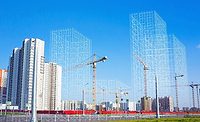Construction and Automotive Industries to Drive Strong Global Isocyanates Demand
The global isocyanates market is witnessing consistent demand in the construction industry due to its reactive chemical properties and its usage in the production of adhesives, foams, and elastomers.

A recent study by Fact.MR projects that the global isocyanate market will record an expansion rate of around 6% from 2019-2027. The global isocyanates market is witnessing consistent demand in the construction industry due to its reactive chemical properties and its usage in the production of adhesives, foams, and elastomers. Increasing vehicle production in countries like China, Mexico, Japan, U.S., and Germany, along with vehicle aging, is one of the critical drivers for sales of isocyanates.
The industry produces a range of intermediate chemicals that are used in a variety of applications. A considerable portion of the structured and manufactured goods available are coated, and isocyanates are present in most of the high-quality, long-lasting coatings.
The present scenario of excessive demand for isocyanates is encouraging manufacturers to invest more and enlarge their product portfolio to acquire a large customer base and gain high market share within the isocyanates market. However, volatile raw material prices and accessibility, along with issues related to isocyanate compounds being toxic and hazardous in nature as compared to standard mineral oils, are proving to be important constraints on the worldwide market for isocyanates.
Methylene diphenyl di-isocyanate (MDI) resin holds more than two-thirds of the market share of overall sales in the global isocyanates market. Demand for MDI is anticipated to rise due to its increased application in sealants, adhesives, and elastomers. Growing end-use industries are also expected to fuel the market over the forecast period. The energy crisis in emerging economies has increased the demand for energy-efficient buildings, as well as incentives and public laws to support energy-efficient structures, which are the main drivers of demand for isocyanates.
The development of bio-based isocyanates is expected to further drive market growth, since crude oil is typically used to generate isocyanates and its pricing on the worldwide market changes the amount in the context of manufacturing. Suppliers and those engaged in infrastructure apps are anticipated to benefit greatly from consumer markets as the boom in developing economies in these industries will boost the demand for products based on it.
East Asia is anticipated to see substantial development within the global isocyanates market over the forecast period, with developing economies such as China and India driving the bulk of demand. Flourishing end-use sectors such as building and construction, consumer electronics, and automotive in China and India’s emerging markets are anticipated to complement market growth in the Asia-Pacific region over the forecast period. North America is anticipated to record moderate demand, mainly as a result of increased regulatory involvement by organizations such as the Environmental Protection Agency (EPA) on MDI and toluene di-isocyanate (TDI)-related environmental and health impacts. Due to several strict environmental regulations and low development in end-use sectors, Europe is expected to develop at a reduced pace.
Supply and demand commerce within the global isocyanates market is generally balanced for some raw materials; the exception is MDI, which requires more production capacity by 2020. The global isocyanates market is moderately consolidated, with a few chemical industry giants capturing a large part of the market share. Proprietary technology is a barrier to entry, and several other small- and medium-scale competitors are contending for the top spot through capacity expansion. In addition, new competitors are working on developing isocyanate-free alternatives from renewable isocyanates and bio-based white dextrins.
Additional details are available at www.factmr.com.
Looking for a reprint of this article?
From high-res PDFs to custom plaques, order your copy today!





